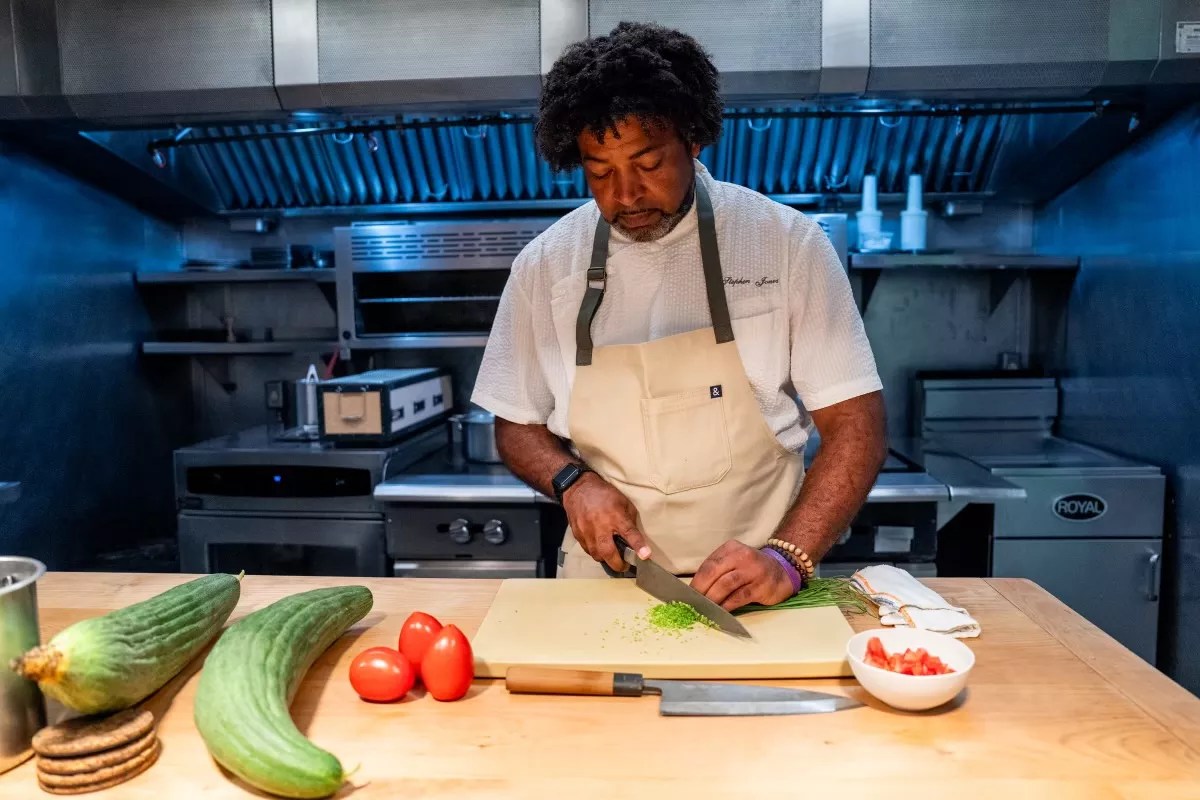
Katie Leveen Photography

Audio By Carbonatix
It wasn’t that long ago when pristinely ironed white tablecloths, jacket-required dress codes and a wine list filled with difficult-to-pronounce names defined a fine dining restaurant. This even applied to Phoenix, a collared shirt and khakis kind of city.
The legendary Mary Elaine’s at The Phoenician was perhaps the Valley’s most famous fine dining destination. When it opened in 1988, it drew elite diners noshing on rare caviar bearing a price tag akin to a small mortgage and sipping offerings from a wine list worth millions.
When it closed in 2008, a new, less formal version of fine dining was on the rise. Contemporaneous restaurants helmed by legendary chefs and James Beard Award winners like Christopher Gross and Vincent Guerithault carried the elegant mantle but modernized it along the way.
In recent years, a new wave of fine dining venues has emerged with a different approach, fueled by the pandemic shutdown and a younger generation of diners that make reservations after perusing Yelp or Instagram and, for the price, want to experience more than just great food.
A welcome pour of bubbles, watercolor prints that accompany menus and meticulous service from the time the reservation is placed are among the ways Phoenix’s haute restaurants are accommodating expectations while redefining the category.
When Anhelo chef and owner Ivan Jacobo learned the couple at one of his tables was from Wyoming for a weekend wedding and had never been to Phoenix, he called one of the five pedicabs he has on speed dial and arranged a surprise post-dinner ride and tour of downtown Phoenix.
“Fine dining is not just beautifully plated food. From the moment you walk in the door to the moment you leave should be a full-blown experience where staff genuinely cares about the guest,” he says. “Just because you serve wagyu on a white tablecloth doesn’t mean fine dining, in my eyes.”
So what does fine dining mean to chefs driving the genre in Phoenix? It’s about a lot more than the food.
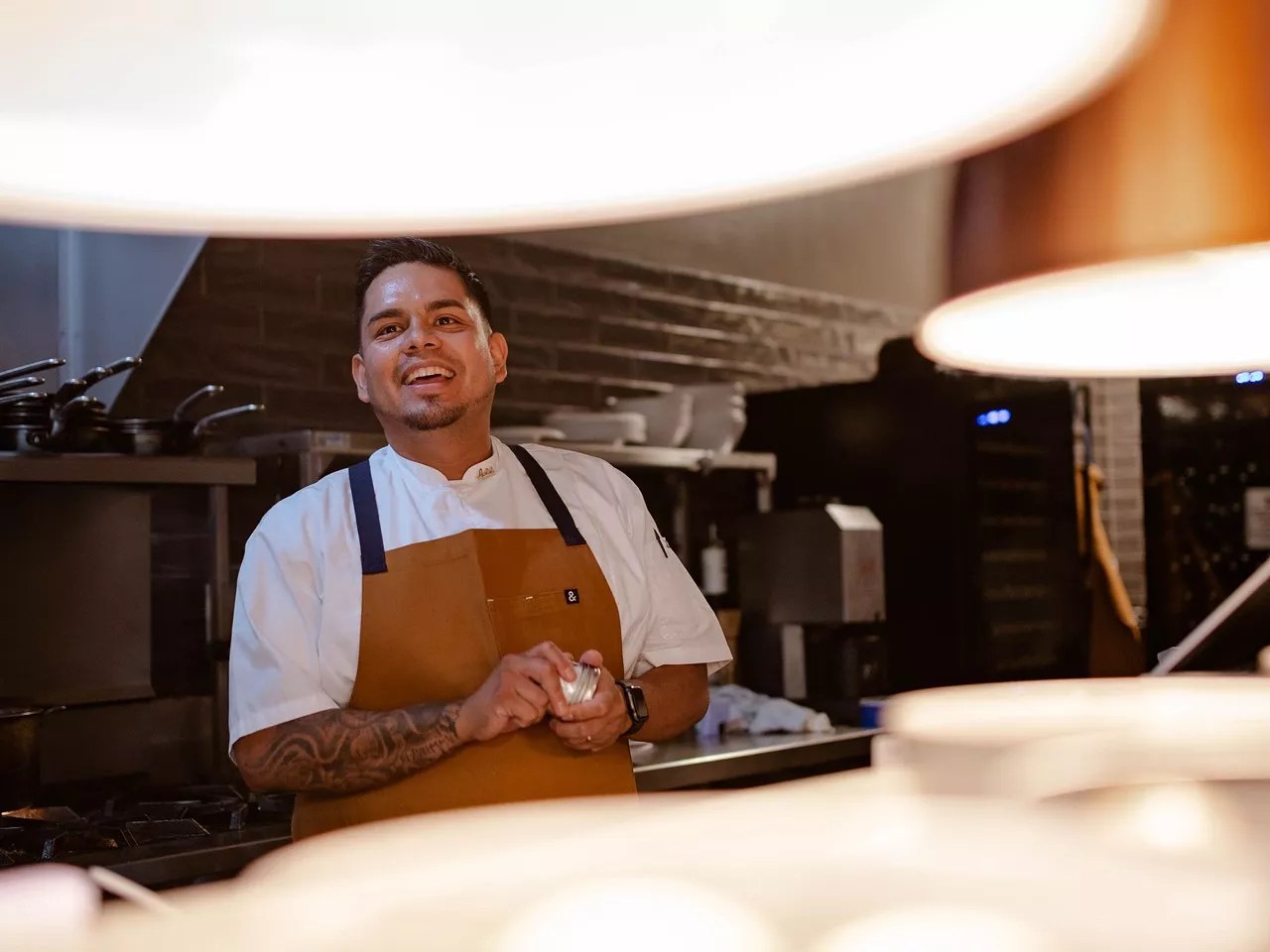
Anhelo chef and owner Ivan Jacobo is working on plans to relocate his restaurant and open a new one.
Anhelo
Focusing on a feeling
Jacobo, who is in the process of moving Anhelo from the Orpheum Lofts to Old Town Scottsdale by next February, acknowledged his venue lacks Christopher’s at Wrigley Mansion’s unparalleled city views or the ultra-romantic ambiance at Cafe Monarch.
So he makes up for it how he can. Besides the pedicabs, attention is paid to guests’ notes on the reservation platform as to why they are visiting or whether they are celebrating a special occasion. The couple that’s dropping their child at ASU is sent home with a care package of candy, ramen and other dorm-appropriate items for their new Sun Devil. The couple celebrating the future birth of their baby receives a basket of toys for their new addition.
Guests who opt for the 10-course tasting menu enjoy one course in the wine cellar. A fromage cart circulates at the end of the meal.
“I grew up not being able to afford this, so I’m constantly seeing how we can improve the experience that Anhelo is,” Jacobo says. “I want people to come to our restaurant because of the way the restaurant makes them feel.”
At Kai, the signature restaurant at the Sheraton Grand at Wild Horse Pass, every menu, made of desert pine, includes an original watercolor painting by Gila River Indian Community artist Joshua Yazzie. They serve as visual partners to verbal stories told by staff of the history, land and people of Arizona’s indigenous communities that inspire the venue, explains general manager Kevin Shirley.
An 8-by-10-inch copy of the painting is available to guests who wish to buy a memento.
“This is something that isn’t done elsewhere,” says Shirley, who has been with the restaurant for 15 of its 16 years as a Forbes Travel Guide Five-Star star restaurant – the only Arizona restaurant with this distinction.
This fall, James Beard Award semifinalist chef Stephen Jones opened a revamped version of The Larder & The Delta that boasts a 12-course tasting menu with Southern flair. In the former home of Binkley’s, guests linger over the two-hour extravaganza that starts at $155 per person with the option of supplements like Royal Ossetra Caviar, black truffle and foie gras that run as high as an additional $125 each, and two levels of wine pairings that can go up to $225.
As he sees it, that’s just the starting point.
“What fine dining encompasses is a hospitality experience from the moment the reservation is placed to the follow-up call,” Jones says. “It’s the whole circumference of the dining experience.”
Three decades ago, the signature restaurant at a brand new sparkling resort called The Phoenician was the epitome of that experience in Phoenix.
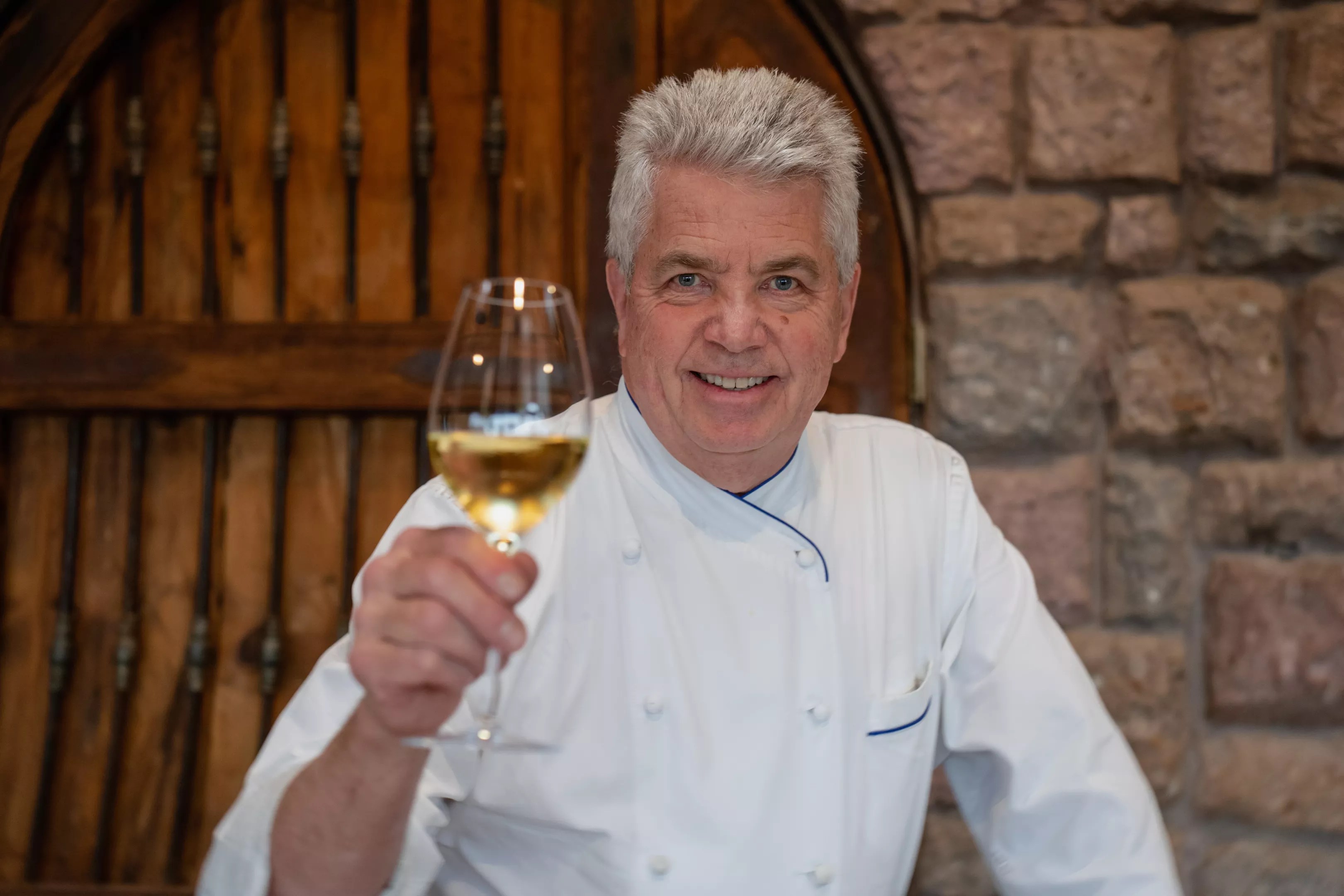
James Beard Award-winning chef Vincent Guerithault has hosted presidents, governors, celebrities and other high-profile guests since opening Vincent’s on Camelback in 1985.
Vincent’s on Camelback
‘THE fancy place’
When Mary Elaine’s opened, it came with a men’s jacket requirement and The Phoenicians’ deep pockets, allowing it to form the best kitchen team the city had seen, says Vincent Guerithault, who opened Vincent on Camelback in 1985. When the chef moved to Arizona in 1979 from Chicago, dirt roads stood where highways are today and pricey steakhouses comprised the fine dining arena.
Mary Elaine’s stood out at a resort that was already turning heads. And then came head chef Alex Stratta.
“It was very luxurious, but the food was extraordinary,” Guerithault says. “To me, Alex was and still is the best chef and most talented chef that Phoenix has ever seen.”
Stratta, a two-Michelin star chef and James Beard Award winner, joined the team in 1989, six months and several chefs after it had opened. He stayed through 1998, before heading to Las Vegas to start restaurants for high-profile hotels and resorts.
He recalls Mary Elaine’s being part of a bigger picture. The lavish Phoenician set a new standard of no-holds-barred luxury in the Southwest.
“It was THE hotel restaurant at THE hotel,” Stratta recalls. “It was all about luxury, opulence and overindulgence… THE fancy place at THE fancy place.”
While diners felt at home with the restaurant’s high-end exclusive wine list, that didn’t always apply to Stratta’s French-Italian dishes that weren’t as ubiquitous as they are today. Risotto, for example.
“You’re selling rice for $37? And for $68 with white truffles?” Stratta says of diners’ reactions. “This kind of food wasn’t proposed to them at that level yet.”
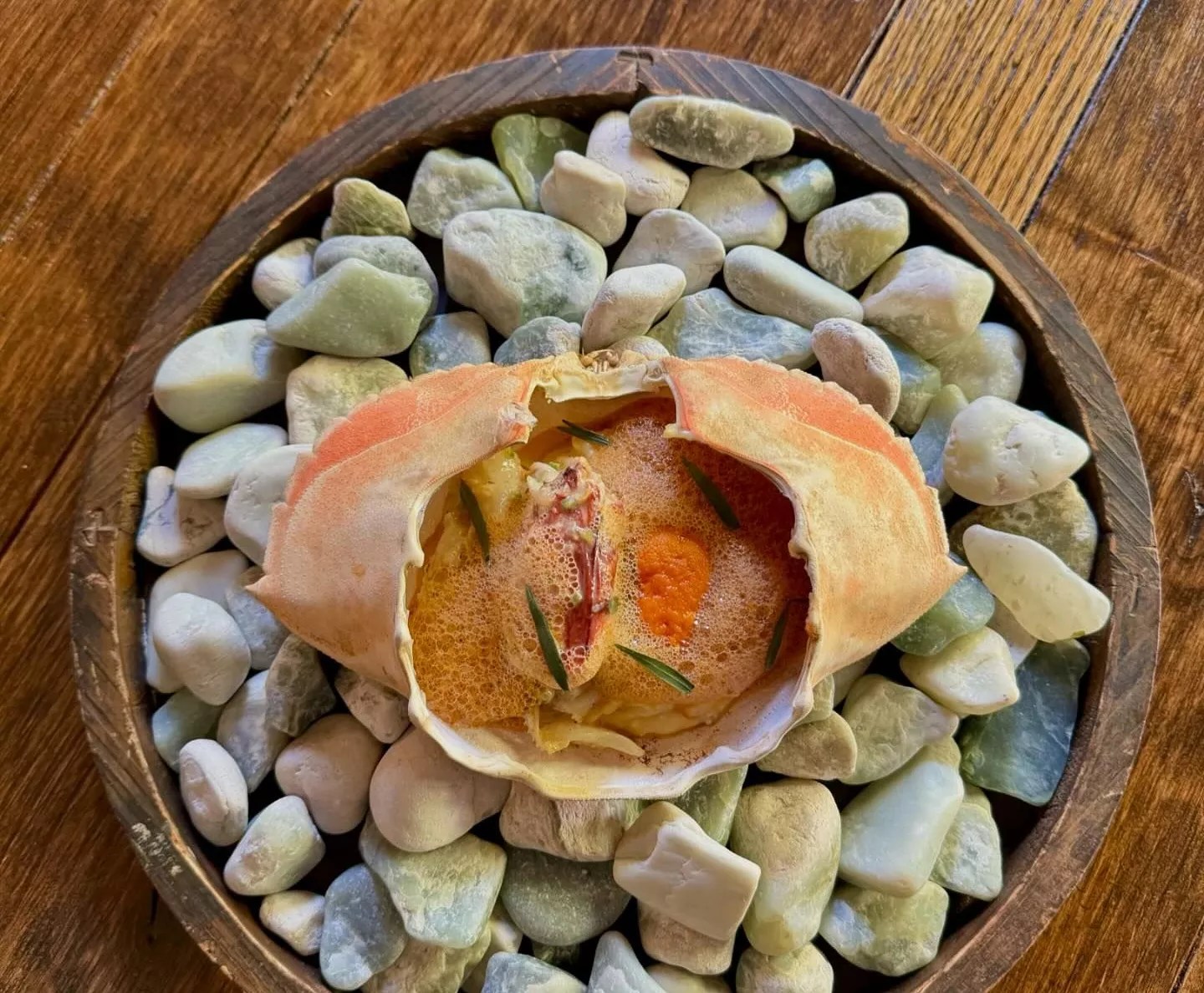
A dish from The Larder & The Delta’s 12-course tasting menu. Blue crab, sea urchin and tarragon sit atop yellow corn grits.
The Larder & The Delta
Back to the basics, but in jeans
Stratta says the fine dining landscape evolved from being strictly associated with hotels to standalone spots. Recently, it has been “going back to the basics.”
Jones says this homecoming of sorts provided stability post-pandemic. Many chefs are going back to their culinary training, which is often rooted in fine dining.
Because the fine dining model requires reservations and often a deposit or full payment upfront, it dovetails with the need to balance rising costs and labor expenses while literally putting food on the table. The planning required for every menu, something that for Jones is a six- or seven-week process, leaves less room for surprises.
“With fine dining, you’re able to get rid of the guessing you have in casual dining, where you’re open every day and don’t know how many people are coming in,” says Jones, who is fine with customers donning cocktail attire or jeans and a polo shirt to his new spot. “You’re prepared and you have more set numbers. But, you’re keeping the overall feel more casual.”
On the flip side, the financial impact of the global shutdown made customers seek more relaxed dining experiences. During the pandemic and just coming out of it, customers wanted affordability and craved comfort. But as time went on, the dining public became ready, once again, to spend more, to enjoy upscale experiences and extravagant eats.
And through this reinvention came revival.
“There was a rumor that fine dining is dead,” Jones says. “But fine dining, it’s back.”

Chef Cory Oppold opened his Scottsdale tasting menu-only restaurant COURSE about a year and a half ago.
COURSE
Social media, bloggers influence a welcoming, unstuffy scene
Kai’s general manager Kevin Shirley says fine dining has become more welcoming than it was 15 years ago.
“It was very stuffy and very stern. Fine dining has progressed to where we want everyone to feel comfortable dining in our restaurant,” he says. “Fine dining should be accessible to all people, although the price point may dictate that a bit.”
Much has to do with the relaxation of attire. Kai’s dress code that forbade flip flops, shorts and hats and dissuaded denim was lifted two years ago, partly due to the increased summer heat. Today, it’s a fluid “business casual.”
Social media platforms that allow anyone to be a food critic have also played a role. Bloggers and review sites like Yelp draw new customers into restaurants in a way that old-school printed reviews or features used to, making it easier for restaurants to get discovered.
“I can’t remember when a magazine article had as big of an impact as a blogger or social media,” says Stratta, who will lead the culinary program at the luxury Fairmont Residences Phoenix slated to open next year.
Jones says the true fine diner, or someone who frequents these establishments on a regular basis, is a small percentage of his clientele. The vast majority are customers celebrating a special occasion or those yearning to check out the city’s new, buzzy hot spot. The dining demographic is also getting younger.
“With the advent of social media, Arizona is a place that likes to follow trends,” Jones says.
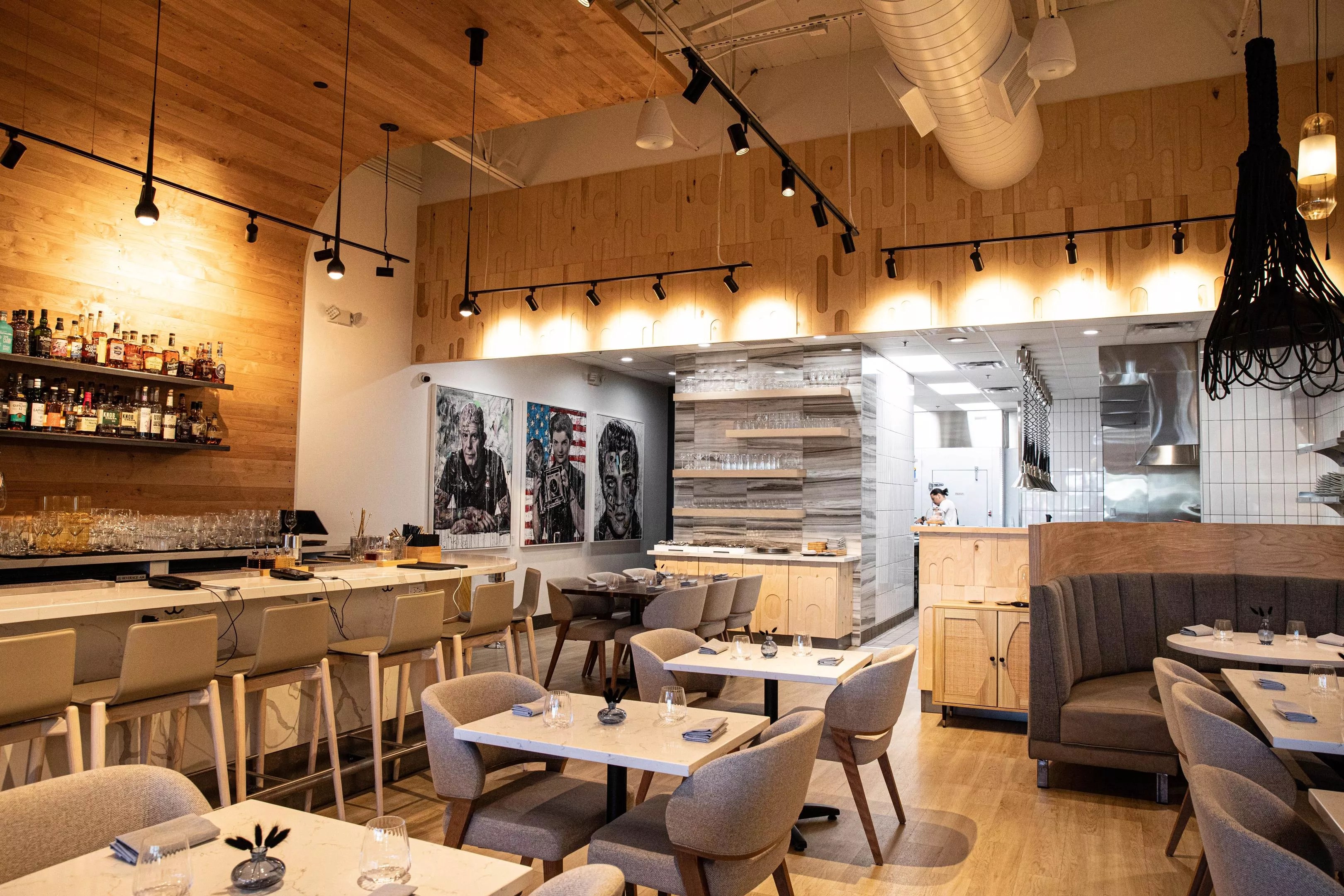
On Sunday mornings, a more casual, nostalgia-inspired concept called Morning Would takes over Course to offer a six-course brunch.
Course
The popularity of cooking shows on channels like The Food Network and Instagram, has made people more comfortable with fine dining dishes compared to 20 years ago, explains Cory Oppold, chef and owner of COURSE, a Scottsdale tasting-menu-only restaurant he opened in May 2023.
Oppold, whose resume features lauded spots like Tarbell’s and the former Binkley’s, says that post-pandemic, people wanted comfort food in a somewhat nostalgic setting. He doesn’t think that meant fine dining slipped, but rather found a place in customers’ lives where it made sense, financially, or when they felt like treating themselves.
Before, in the tradition of Mary Elaine’s, diners went to fine dining establishments as a regular part of their week or month in addition to grand celebrations. But in recent years, it has become less routine. This motivates chefs and restaurateurs to step up their game.
“The food should be good, very focused with laser precision. That’s our job as chefs,” Oppold says. “But there needs to be above and beyond hospitality, a nice feel-good atmosphere where they belong.”
Shirley sees the Valley as not only somewhere fine dining belongs, but somewhere that it can continue blossoming and emerging.
“People once thought that Phoenix was all Mexican food, and was never the case… We’re going to be able to go toe-to-toe with larger coastal cities and food meccas and hubs,” Shirley says. “It’s getting larger and I can’t wait to see what it will become.”